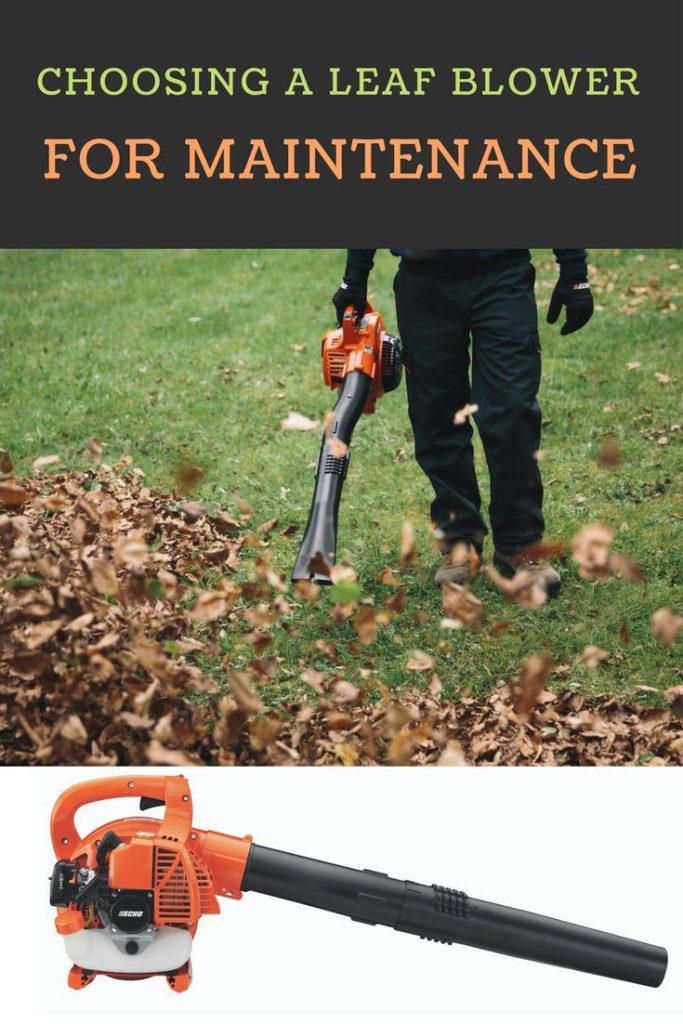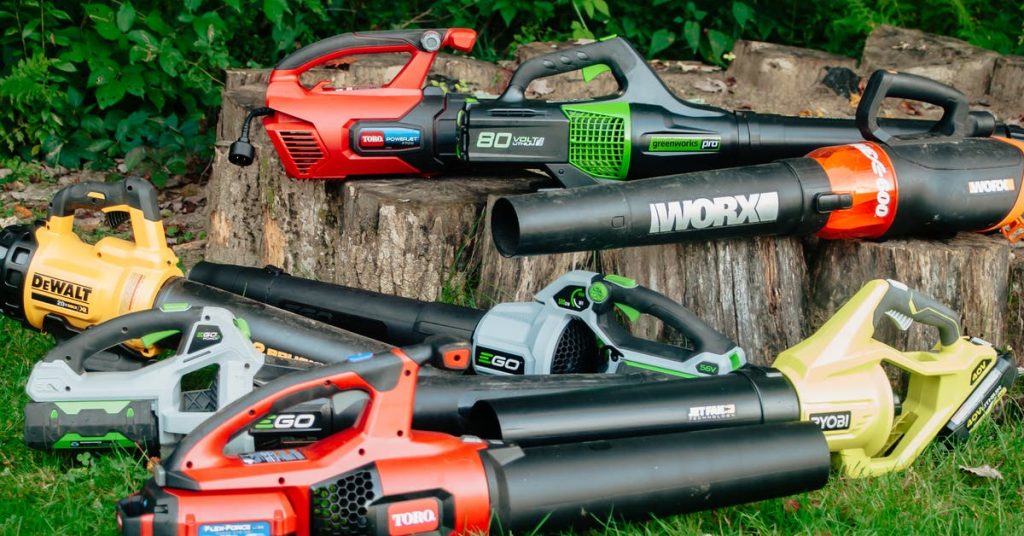When it comes to maintaining our yards and keeping them free from the mess of fallen leaves, a leaf blower is an essential tool. But have you ever stopped to think about the ergonomic aspects of choosing one? With the increasing popularity of outdoor power equipment, it becomes crucial to consider the comfort and safety of using these tools. In this article, we explore the importance of ergonomic considerations when selecting a leaf blower, and how it can make a significant difference in our gardening experience. From handle design to weight distribution, we’ll uncover the key factors that can enhance not only our efficiency but also our overall well-being while taming those unruly leaves.
This image is property of blog.gardeningknowhow.com.
1. Weight
When it comes to leaf blowers, weight plays a crucial role in determining user fatigue. The lighter the leaf blower, the easier it is for us to maneuver and operate it for extended periods without straining our muscles. Heavy leaf blowers can quickly tire us out, making our outdoor tasks more exhausting than they need to be. That’s why it’s essential to consider the weight of a leaf blower before making a purchase.
Different users may have varying weight preferences when it comes to leaf blowers. Some individuals may prefer a lightweight option, while others may find more substantial units easier to control. It ultimately depends on our individual strength and physical capabilities. It’s crucial to choose a leaf blower that we feel comfortable using, as it can greatly impact our overall experience and productivity.
Weight distribution is another essential factor to consider when selecting a leaf blower. Even if a blower is relatively lightweight, poor weight distribution can lead to unnecessary strain on our hands, wrists, and arms. It’s important to look for models that have a well-balanced design, ensuring that the weight is evenly distributed throughout the unit. This helps minimize fatigue and allows for more comfortable operation.
2. Handle Design
The handle design of a leaf blower directly influences our comfort and ease of use. Opting for a leaf blower with an ergonomic handle grip is essential for reducing strain and improving overall user experience. An ergonomic grip is designed to fit comfortably in our hands and minimize the risk of developing hand fatigue or discomfort. It allows us to maintain a natural grip, reducing stress on our wrists and minimizing potential injuries.
Adjustable handle positions are another feature to consider when choosing a leaf blower. Different users have varying heights and arm lengths, and adjustable handles ensure that we can find a position that suits our unique requirements. This feature allows us to maintain proper posture while operating the blower, minimizing the risk of developing back, shoulder, or arm pain.
Vibration reduction in handles is a crucial consideration, especially for those who will be using a leaf blower for an extended period. Continuous exposure to excessive vibrations can cause discomfort and lead to conditions like Hand-Arm Vibration Syndrome. Choosing a leaf blower with vibration-reducing handles can help mitigate these risks, ensuring a more comfortable and enjoyable user experience.
This image is property of cdn.thewirecutter.com.
3. Noise Levels
The noise produced by a leaf blower can significantly impact our comfort, especially when using it for extended periods. Excessive noise levels can be both irritating to us and disruptive to those around us. It’s crucial to consider the noise levels of a leaf blower before making a purchase.
To minimize the impact of noise on our comfort, it’s recommended to use hearing protection while operating a leaf blower. Earplugs or earmuffs can significantly reduce the exposure to loud noise, protecting our hearing and preventing potential damage. Prioritizing our safety and well-being by using appropriate hearing protection is essential when using any equipment that produces loud noises.
If noise levels are a significant concern, there are options available for quiet leaf blowers. These leaf blowers are designed to operate at lower decibel levels without compromising on performance. Investing in a quiet leaf blower can provide us with a more pleasant user experience and reduce the disturbance to our neighbors or family members.
4. Power Source
Choosing between gas-powered and electric blowers is an important decision when considering a leaf blower’s power source. Each type has its own advantages and disadvantages, and it’s crucial to weigh these factors to make an informed choice that aligns with our specific needs and preferences.
Gas-powered blowers are known for their high power output, making them ideal for larger properties or heavy-duty tasks. However, they tend to be heavier than electric blowers and require regular refueling with gasoline. Gas blowers also emit exhaust fumes, contributing to air pollution and posing potential health risks.
On the other hand, electric blowers, whether corded or cordless, are generally lighter in weight and more environmentally friendly. Corded electric blowers provide continuous power as long as they are connected to an outlet but have the limitation of limited mobility due to the cord length. Cordless electric blowers, powered by rechargeable batteries, offer greater freedom of movement but may have limited battery life.
Handling and maneuverability are other factors to consider when choosing a leaf blower’s power source. Gas-powered blowers may require more effort to start and operate, while electric blowers tend to be more user-friendly and easier to handle. Assessing our specific needs and preferences can help determine which power source is the best fit for us.
This image is property of www.leafblowersdirect.com.
5. Balance and Stability
The balance and stability of a leaf blower are crucial factors in ensuring safe and comfortable operation. A well-balanced unit allows for smoother movement and more controlled blowing, reducing the risk of accidental slips or falls. When looking for a leaf blower, it’s important to consider its balance and stability features.
Dual handles are a popular feature among leaf blowers, as they improve stability and control. Having a handle on both sides of the blower allows us to distribute the weight evenly and maintain a firm grip, reducing strain on our wrists and hands. This feature enhances our overall stability and helps us maintain control even in challenging terrain or when dealing with heavy debris.
Blowers equipped with anti-vibration features provide additional stability and comfort. Excessive vibrations can not only lead to fatigue but can also make it harder to control the blower properly. Choosing a leaf blower with anti-vibration technology can significantly reduce the impact of vibrations, minimizing discomfort and improving overall stability.
6. Airspeed and Airflow
The airspeed and airflow of a leaf blower directly impact its efficiency and effectiveness in blowing away debris. Optimal airspeed ensures that debris is effectively cleared, saving us time and effort. It’s important to consider the airspeed capabilities of a leaf blower to ensure it meets our specific needs.
Leaf blowers with adjustable airspeeds offer added versatility. Being able to control the airspeed allows us to adapt to different tasks and conditions. Lower airspeeds are useful for light sweeping tasks, while higher speeds are more effective when dealing with heavy, wet leaves or stubborn debris. Having the flexibility to adjust the airspeed to match the specific requirements of each job can greatly enhance our user experience.
In addition to considering airspeed, it’s important to evaluate the airflow capacity of a leaf blower. A high airflow volume ensures that the leaves and debris are blown away efficiently. Look for models that provide a good balance between airspeed and airflow to achieve optimal results and make the task at hand easier and more manageable.
This image is property of img.ehowcdn.com.
7. Size and Portability
The size and portability of a leaf blower are essential considerations, especially for users who will be working in tight spaces or need to transport the blower frequently. Choosing a compact and lightweight option can greatly enhance our maneuverability and ease of use.
Compact and lightweight leaf blowers are easier to carry and operate for extended periods. These models are often less cumbersome and can fit into tight or narrow spaces. Whether we’re clearing leaves from a small backyard or tackling landscaping projects in compact areas, a smaller leaf blower makes the job more convenient and efficient.
Easy maneuverability is another advantage of smaller leaf blowers. Their reduced size allows us to navigate around obstacles with greater ease, ensuring that no corner or crevice is left unattended. This makes our outdoor tasks more thorough and less time-consuming, ultimately contributing to a more enjoyable experience.
When choosing a compact and portable leaf blower, it’s also essential to consider storage requirements. Look for models that are easy to store and don’t take up excessive space in our garage or shed. Compact leaf blowers with foldable handles or detachable parts can be particularly convenient when it comes to storage considerations.
8. Maintenance
The ease of maintenance is an often overlooked but important aspect when choosing a leaf blower. Regular cleaning and maintenance help ensure the longevity and durability of the device, allowing us to get the most out of our investment. Before purchasing a leaf blower, it’s essential to evaluate its maintenance requirements.
Leaf blowers that are easy to clean are preferable, as they simplify the maintenance process. Opt for models with features like detachable blow tubes or access panels that allow us to remove debris easily. Easy access to maintenance components, such as the air filter or spark plug, can also streamline the maintenance process and ensure that we can keep the leaf blower in optimal condition.
Longevity and durability are critical factors. Investing in a leaf blower that is built to last helps us avoid frequent repairs or replacements, ultimately saving us time and money in the long run. Look for reputable brands that offer warranties or guarantees, as this demonstrates their confidence in the product’s durability.
This image is property of www.theberrymandesigngroup.com.
9. Use of Accessories
Using appropriate accessories with a leaf blower can greatly enhance our comfort, support, and overall user experience. Ergonomic straps and harnesses are common accessories that help distribute the weight of the blower and reduce strain on our bodies. When choosing a leaf blower, it’s worth considering its compatibility with these additional accessories.
Ergonomic straps and harnesses attach to the leaf blower and provide additional support during operation. They help distribute the weight more evenly across our shoulders and back, reducing the strain on our arms and wrists. This can make a significant difference, especially when working for extended periods or tackling larger areas.
The impact on user comfort and support should be a priority when evaluating leaf blower accessories. Assessing the design and adjustability of the straps or harnesses can help ensure a customized fit that meets our specific needs. Comfortable accessories can make outdoor tasks more enjoyable and help prevent fatigue or discomfort.
Additionally, compatibility with additional attachments is worth considering for users who may require specialized features or capabilities. Some leaf blowers can be equipped with vacuum or mulching attachments, adding versatility and functionality to the device. Assessing the compatibility and availability of these accessories can enhance the versatility and usefulness of the leaf blower.
10. Cost and Budget
Finding a balance between quality and price is an important consideration when choosing a leaf blower. While it’s natural to be budget-conscious, it’s also essential to prioritize quality and long-term cost considerations.
When it comes to leaf blowers, investing in a higher-quality product can often lead to a better overall experience and longer-lasting performance. Cheaper options may save us money initially but could result in frequent repairs or replacements, ultimately costing us more in the long run. Prioritizing durability and reliability can help us avoid unnecessary costs and frustrations down the line.
Long-term cost considerations should also factor into our decision-making process. Gas-powered blowers, for example, may require ongoing expenses for gasoline, oil, and maintenance. On the other hand, electric blowers often have lower operating costs and fewer maintenance requirements. It’s important to evaluate these long-term costs and choose a leaf blower that aligns with our budget and affordability.
Researching and comparing our options is crucial to make an informed choice. Reading reviews, seeking recommendations, and comparing the features, specifications, and prices of different leaf blowers can help us find the best balance between quality and price. Taking the time to research can ensure that we make a purchase that meets our needs, preferences, and budget.
In conclusion, when choosing a leaf blower, there are several ergonomic considerations to keep in mind. Evaluating aspects such as weight, handle design, noise levels, power source, balance and stability, airspeed and airflow, size and portability, maintenance, use of accessories, and cost and budget helps ensure that we select a leaf blower that enhances our comfort, efficiency, and overall user experience. By considering these factors, we can make an informed choice that allows us to complete our outdoor tasks with ease and enjoyment. Whether it’s cleaning up leaves in our backyard or tackling more extensive landscaping projects, the right leaf blower can make all the difference in creating a pleasant and ergonomic outdoor experience.








































